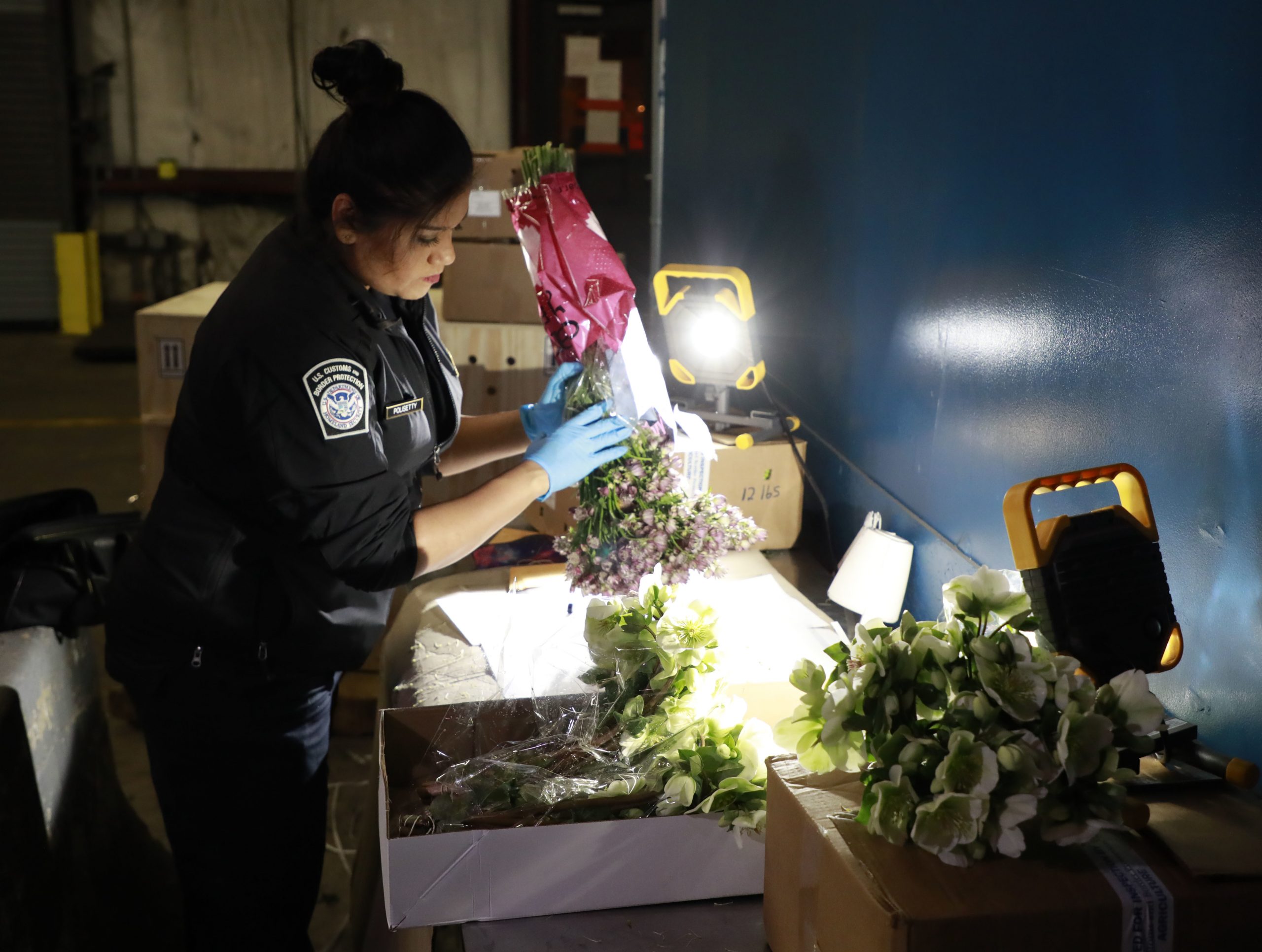Federal officers working at ports of entry across the country will inspect more than 1 billion flowers imported for Valentine’s Day and block any that are carrying pests or diseases from entering the U.S.
Customs and Border Protection officials said 90 percent of fresh-cut flowers come from Colombia and Ecuador, and as of Tuesday, their agricultural specialists had found hundreds of pests among the 974 million flowers that had been examined.
“The flower market at this time of year is huge,” CBP’s executive director for the Agriculture Programs and Trade Liaison office, Kevin Harriger, said in a statement. “Our folks in the field are working extremely hard to make sure flowers get to businesses and homes around the country in time for the big day, but they’re doing so in a way that ensures the American environment and economy is protected.”

Imported flowers run the risk of carrying plant diseases or insects that could wreak havoc on U.S. agriculture and the population’s health, including cutworm moths, miner flies, spider mites, aphids, and thrips, which are tiny winged bugs that devour plants.
The Department of Homeland Security agency is typically associated with guarding the border against human threats, but starting Jan. 1 each year, its Miami branch becomes headquarters for floral importation inspections.
Miami International Airport’s Agriculture Air Cargo Branch inspects more bouquets and plants than any other of CBP’s 327 ports. As of Tuesday, it had already looked over 852 million bouquets, 88 percent of the total number imported to date.
CBP officers at the Miami facility processed more than 1.3 billion flowers leading up to and after Valentine’s Day in 2018, up from 954 million stems of flowers in 2017.

CBP officers based at Port Everglades, Fla., have inspected 24.8 million flowers to date and officers in Los Angeles have looked over 16.2 million.
Roses made up a third, and mixed bouquets were the second-highest type at 190 million.
Exotic pests and foreign animal diseases cost the country $138 billion in economic and environmental losses every year.
Stems of flowers determined to contain a banned bug or disease will either be treated and released, exported to the originating country, or destroyed.
Mother’s Day is the only holiday that sees more fresh-cut flowers imported than Valentine’s Day.

